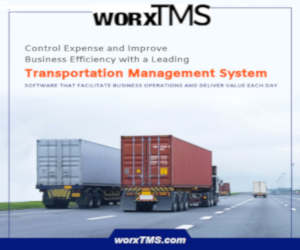The cover of the July edition of LM, for the annual State of Logistics edition, featured the headline “Out of Sync.” And, to be honest, that headline makes plenty of sense for all kinds of reasons, make no mistake. The word count for this column is not long enough to touch upon the myriad issues and challenges that we have all seen, as it relates to supply chain, logistics, and freight transportation challenges, going back to the onset of the Covid-19 pandemic, of course. But maybe that is OK, as we have all lived through these many challenges.
The cover of the July edition of LM, for the annual State of Logistics edition, featured the headline “Out of Sync.” And, to be honest, that headline makes plenty of sense for all kinds of reasons, make no mistake.
The word count for this column is not long enough to touch upon the myriad issues and challenges that we have all seen, as it relates to supply chain, logistics, and freight transportation challenges, going back to the onset of the Covid-19 pandemic, of course. But maybe that is OK, as we have all lived through these many challenges.
The thing is, though, along with the initial challenges that the pandemic brought, including things like the lockdown itself, limited product availability, staffing issues, and really, just general uncertainty, angst, and frustration, for so many, new logistics- and supply-chain challenges ostensibly come along for the ride.
But please let me clear, as I have previously noted, supply chain stakeholders did not, and do not, have any type of “woe is me” outlook in this regard. I mean, how could that ever be the case? The reason for that is that they were on the front lines to keep moving, sourcing, and storing things we all need, like food, for example, in pandemic times, or not.
As for the “out of sync” part of this, while many people have gotten their vaccinations and the lockdowns are firmly in the rearview mirror, there are more than a few challenges we are facing, as they relate to the supply chain and logistics, some of which could be viewed as pandemic-influenced and some which may not.
One thing we are all dealing with has been, and continues to be the 40 year-plus high inflation readings, with June (the most recent month for which data is available) posting a 9.1% annual increase, the largest annual gain going back to February 1981, according to the U.S. Bureau of Labor Statistics.
Stating the obvious, the ongoing steady drumroll of steep inflation gains are doing nobody any favors, as it stretches fixed budgets we have, as consumers and businesses to live and operate on, respectively
In a recent conversation, I had with Tom Madine, a Dallas-based privately held freight brokerage and authorized UPS reseller, at the SMC3 Connections conference in San Diego, he explained that in terms of costs, everything costs more, whether it is fuel, labor, or equipment, everything is up across the board for everyone that is in this industry.
“I think that people need to get somewhat comfortable with the notion that things are going to cost more for a while,” There is a lot of opportunity in that for those in this business, especially for some of the challenges we have had in the supply chain. People seem to take it for granted that things will show up. We are all in business to make a profit, but if you can go to a customer dealing with prices going up and help run its supply chain more efficiently and save the customer money, you will be in a position to win business. We cannot control inflation and the cost of things, but you can sort of control the way you respond to the market. And right now, pricing is really high for everything. Businesses are really worried about where their dollars are going.”
Madine makes some excellent points there, for certain. And inflation not only impacts the prices we pay for everything, it also requires the need for wage gains, in order to keep pace, even if current salary adjustments are still falling short of the annual monthly inflation increases we are seeing, too.
That speaks, again, to how things are still very much out of sync these days.
Other things, which can serve as similar examples, include: ongoing retail sales growth (albeit at fairly low levels), at a time when economic indicators remain as mixed as ever; container rates declining, at a time when import growth remains very high; the cooling-off of truckload spot market rates, in 2021, driven by record-high diesel prices, which are now thankfully coming down, and overcapacity, following what could be described as a booming 2021, in terms of demand, coupled with a tighter capacity environment at that time, too; and package revenue growth rising with volumes trending down.
There is more to the out of sync thesis, with these serving as some basic examples. Supply chain and logistics have been through some unprecedented events and occurrences going on three years now, with new challenges and developments popping up along the way, too. What happens next is anyone’s guess, but it goes without saying it will not be uneventful.



